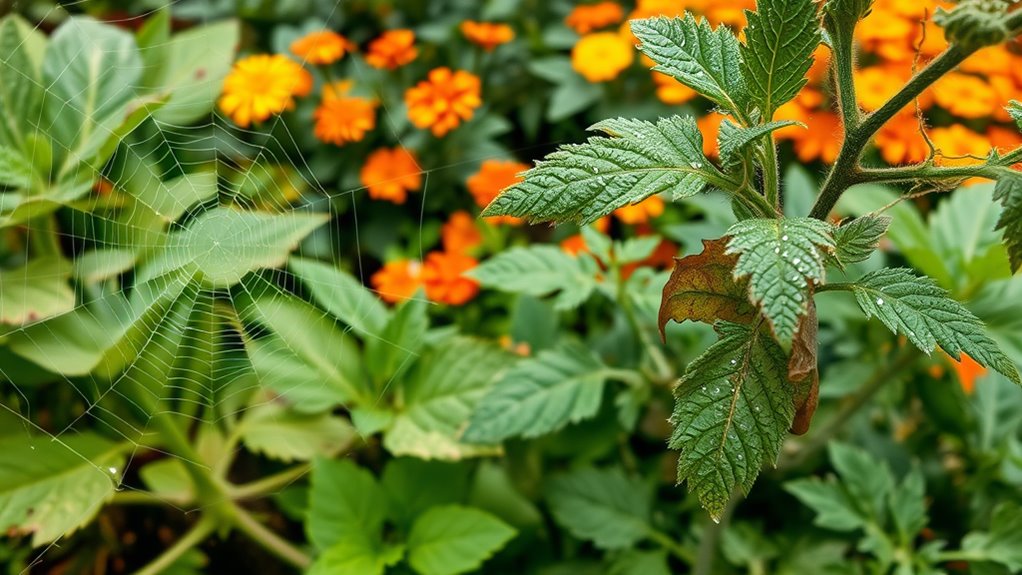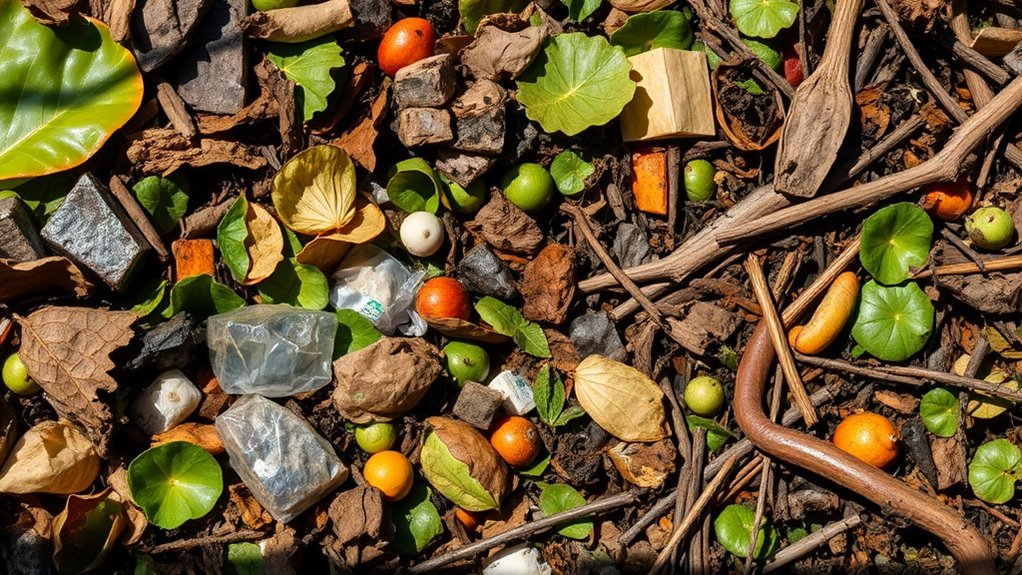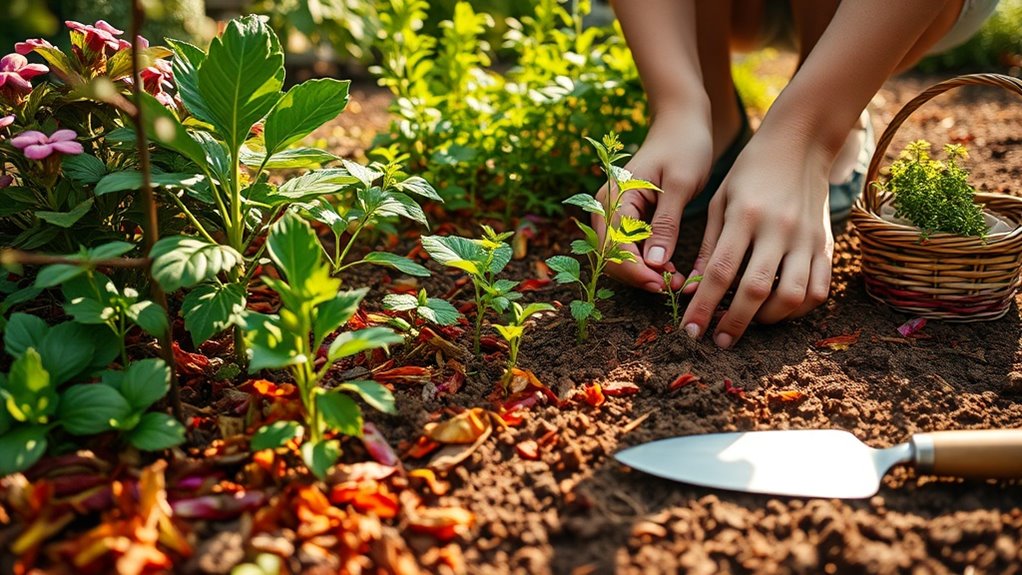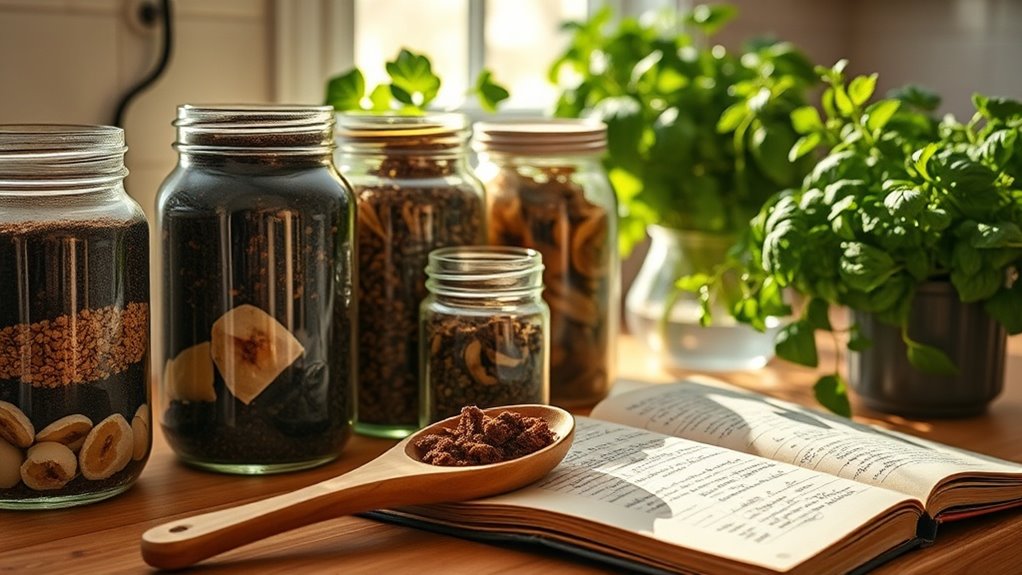Fix These 5 Common Garden Diseases Before They Spread
Like a silent thief in the night, common garden diseases can stealthily invade your plants, leading to devastating consequences if left unchecked. You need to be vigilant and proactive in identifying and addressing issues such as powdery mildew, root rot, blight, rust, and downy mildew. Each of these threats demands a different strategy, and understanding their unique characteristics is crucial for effective prevention and treatment. What steps can you take to safeguard your garden’s vitality?
Key Takeaways
- Identify and remove affected leaves immediately to prevent the spread of diseases like powdery mildew and rust.
- Ensure good air circulation around plants by spacing them adequately and avoiding overcrowding.
- Monitor and adjust humidity levels to deter diseases like downy mildew, particularly in warm, humid conditions.
- Apply appropriate fungicides or natural solutions promptly at the first signs of blight or root rot.
- Regularly inspect plants for early symptoms of diseases to catch and manage issues before they escalate.
Powdery Mildew
Powdery mildew is a fungal disease that can quickly take hold in your garden, affecting a wide range of plants. It thrives in warm, dry conditions and manifests as white, powdery spots on leaves.
To implement a plant disease fix, ensure good air circulation around your plants and avoid overcrowding. Regularly monitor humidity levels and water early in the day.
If you spot powdery mildew, remove affected leaves and apply a fungicide designed for this specific issue. You can also use homemade remedies like a baking soda solution to help manage and prevent further outbreaks effectively. Early intervention is crucial to prevent widespread damage to your plants.
Root Rot
Root rot is a serious condition that affects plant roots, often leading to wilting, yellowing leaves, and ultimately, plant death.
This disease typically arises from overwatering or poorly draining soil, creating an anaerobic environment that encourages fungal pathogens. To diagnose root rot, inspect the roots for dark, mushy areas, indicating decay.
If detected, you should immediately stop watering and improve drainage. Infected plants might require repotting in fresh, sterile soil, and it’s crucial to ensure your watering practices align with the plant’s needs.
Prevention involves maintaining proper soil aeration and monitoring moisture levels to avert this fatal condition. Additionally, recognizing signs of overwatering can help prevent the onset of root rot before it becomes severe.
Blight
After addressing root rot, it’s important to recognize another common threat in gardens: blight. This fungal disease manifests as dark, water-soaked spots on leaves, stems, or fruits, leading to rapid deterioration.
To combat blight, maintain proper air circulation by spacing plants adequately and avoiding overhead watering, which promotes moisture retention. Regularly remove infected plant material to minimize spread. Additionally, consider resistant plant varieties to reduce susceptibility. Applying fungicides early can also help manage outbreaks.
Interestingly, similar to how peppers turn black due to environmental stressors, blight can thrive under certain conditions that promote humidity and poor airflow.
Vigilance is key; inspect plants frequently and take action promptly to prevent blight from causing significant damage to your garden.
Rust
Rust is a pervasive fungal disease that can wreak havoc on your garden, appearing as reddish-brown pustules on the undersides of leaves. If left untreated, it can lead to significant leaf damage, stunted growth, and reduced yields. To effectively manage rust, consider the following strategies:
| Strategy | Description | Timing |
|---|---|---|
| Remove Infected | Prune affected leaves immediately | As soon as seen |
| Improve Air Flow | Space plants adequately | During planting |
| Apply Fungicide | Use suitable treatments | At first sight |
| Rotate Crops | Change plant families yearly | Annual basis |
| Monitor Conditions | Check humidity and moisture levels | Weekly |
Additionally, maintaining better plant health through proper care can help prevent rust and other diseases in your garden.
Downy Mildew
Downy mildew is another significant fungal disease that can threaten the health of your garden.
This pathogen thrives in humid conditions, leading to rapid spread and damage.
To combat downy mildew effectively, you should:
- Monitor plants regularly for yellowing leaves and white, fuzzy growth.
- Ensure proper air circulation to reduce humidity around your plants.
- Apply fungicides approved for downy mildew when necessary.
Additionally, using natural sprays can help deter the spread of downy mildew by creating a protective barrier on your plants.
Addressing this disease early can prevent severe crop loss and maintain your garden’s vitality.
By implementing these strategies, you can safeguard your plants and ensure a thriving garden ecosystem.
Don’t let downy mildew take hold!





